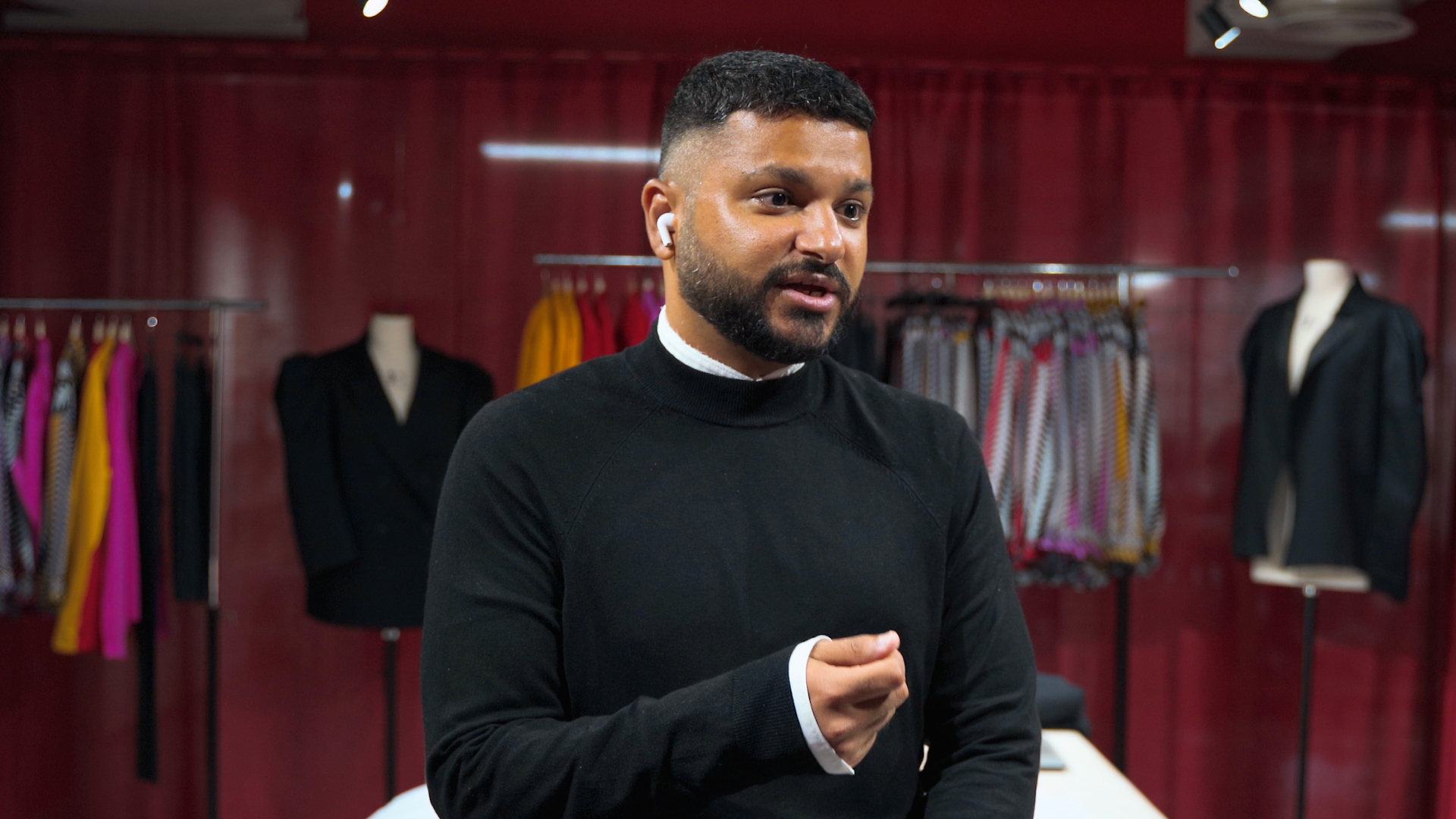The fashion designer does not just derive his inspiration from pretty buildings, but also from how the people in the city dress and live.
At age seven, Fahad Al Obaidly sat in the living room watching his mother make her own clothes inspired by rushed sketches of dresses from the telenovelas she loved watching.
Despite it being a long time ago, these memories linger in the 37 year old’s mind, who has grown up to become Qatar’s first male fashion designer.
At the time, Al Obaidly could not understand the true value of making his own garments. He constantly found himself wondering why his mother went through great lengths to make her own clothes when she could have just bought some. It gave him the curiosity that many designers hold and are driven by.
“My first memory as a child was being curious about how people dress. Why do they dress the way they dress? I even started judging people in public. When my mother would to take me to the mall, I always looked at people and thought, “Where does he think he is or like where does she think she is, like she should have worn this or that,”” he told Doha News.
He travelled between Montenegro, Serbia, Macedonia, Turkey and Paris over the course of six years, completing his studies at The Institute Marangoni in Milan, one of the most prestigious fashion institutions in the country, and receiving a Bachelor of Arts in fashion design.
In 2014, he made his way back to Qatar and debuted his menswear line, FAO (Fahad Al Obaidly). It wasn’t easy for him as a young designer to make enough profit and support himself.
Fahad and the City
Al Obaidly’s designs are inspired by the city, “I love the architectural language in the city and I take some negative designs.”
Whenever a building would catch his eyes, in colours or design, he would illustrate it immediately before proceeding to strip it of one element, re-illustrate it and design repeatedly. “I like this repetition, like a wave of print.”
His designs, whilst loud, are soft to touch.
“I like the combination of exaggeration in print and the high quality in terms of the production of the fabric itself.”
He does not just derive his inspiration from pretty buildings, but also from how the people in the city dress and live.
The fashion designer tells Doha News that sometimes he’d be sipping his morning coffee when he’d come across a woman that has a sharp edge to her style, so he reaches for his pen to immediately sketch it out.
To Al Obaidly, clothes are a medium to communicate your identity.
“Who you are, what you like, what you do, you communicate that on a daily basis. The minute you wake up and dress with something like a t-shirt, or blazer, you try to communicate something others like, do you want to take me seriously? Do you want me to take you as a chill person? Do you want to make me feel more accessible?”
To him, this is the essence of what he loves about the fashion industry; the way it’s easy to communicate something just by dressing in a certain way.
Trends and inclusivity
As for his favourite fashion trend at the moment, it happens to be oversized blazers.
After social media has taken over the lives of many, dictating how people are perceived, Al Obaidly thinks that no matter who you are, what you do, or what you look like, there’s nothing that an oversized blazer with a little extra edge won’t fix.
“Anytime I’m feeling a little chubby. I just put a blazer on. It’s like my Superman cape, I just put it on and go out to face the world.”
The industry lacks inclusion, according to Al Obaidly, and while there have been efforts to diversify it and make it more inclusive, he believes that a lot of it is for commercial reasons more than ethical ones.
“They want to just attract more people to sell more clothes, but not necessarily authentically. They want to include everyone in the conversation.”
The Middle Eastern fashion scene
Al Obaidly told Doha News that what he believes sets the Middle Eastern fashion scene aside is its effortlessness and humility.
“I was exposed to different types of people during my travels. I can tell you a lot of people wake up to impress someone or make someone feel something. For Arabs, they are who they are and they show that in their fashion.”
He does not think that they are trying to impress anyone, but dress wholly for themselves.
“Sometimes you need to think globally, but act locally. We have a beautiful character in the khaleej, the Arab World and the Muslim world that no one else has. I think we should embrace it rather than being part of something that’s not a part of us.”
What the future holds
Currently, Al Obaidly is the Head of Public Programmes at M7, an incubation hub for fashion and design, where he helps young Qataris and residents launch their own businesses by sharing his expertise.
M7 is one of the latest projects created and funded by Qatar Museums to support the development of a strong creative hub in Doha. It was established under the direction of Sheikha Al Mayassa bint Hamad bin Khalifa Al Thani, Chairperson of Qatar Museums.
The bisht, a robe typically worn by men in the Gulf region, which is Al Obaidly’s favourite item that he’s ever designed, is making a comeback by popular demand. This time however, the design will be more sporty to better suit the upcoming World Cup theme.
He hopes that Qatari and Arab fans will be using it to showcase their support for their teams whilst remaining warm at the same time.







